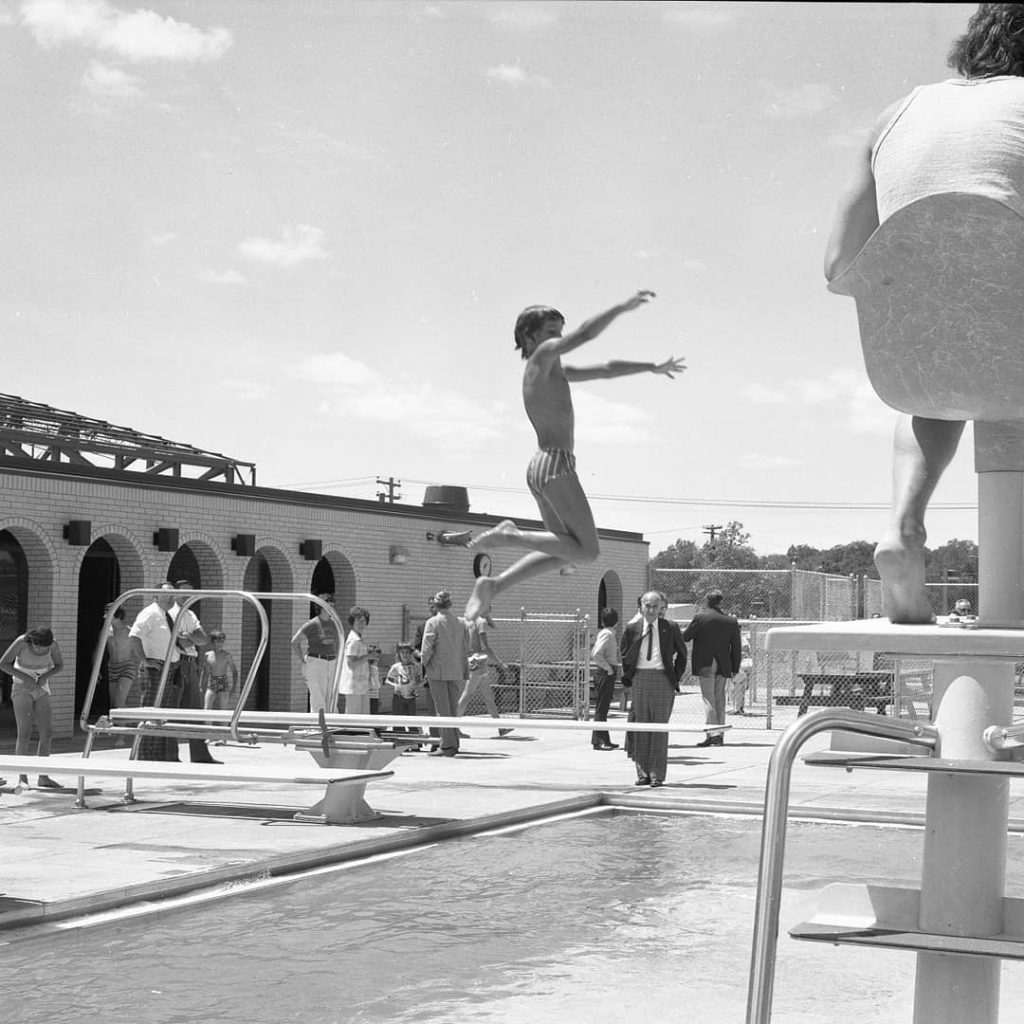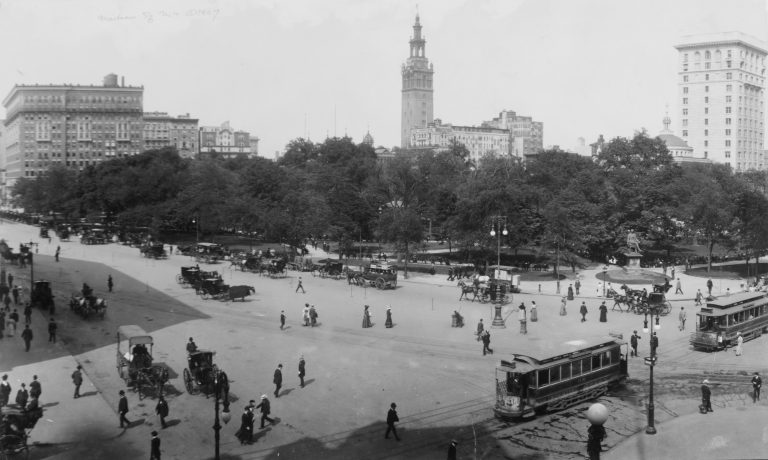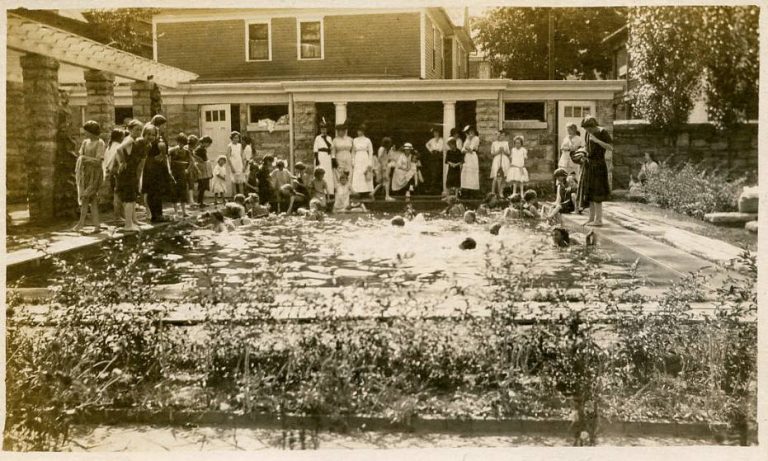The Fairgrounds Pool, Later Renamed Steve D. Alteri Pool, And A Strange Case Of Déjà Vu.
When it comes to the Steve D. Alteri Pool, aka the Fairgrounds Pool, and its history, one is reminded of the quote from philosopher George Santayana, “Those who cannot remember the past are condemned to repeat it.” Various iterations of the quote have appeared over time, but equally important is Jean-Baptiste Alphonse Karr’s “Plus ça change, plus c’est la même chose,” or “the more things change, the more they stay the same.”
The Alteri pool is an example of both in that while the players have changed over the years, lessons unlearned from past issues ultimately have led to the same problems occurring 50-plus years later.

In the late 1960s, the YMCA had just opened the new pool at the former Emma Flower Taylor home on S. Massey Street. By 1970, the two city pools, the John Adams Pool and the Thompson Park Pool, were both in need of costly repairs that could put them out of commission during the summer months. The two pools needed filtering at an estimated cost of $42,700, but city Manager Ron Forbes asked the city council to reject the only bid received, stating in the Watertown Daily Times–
The total cost as bid is $32,700, plus a possible additional $10,000 for a total of $42,700, estimated.
The expenditure of this amount of money on these two old pools is considered excessive in view of the utility or benefit to be derived.
The time given in the bid for completion of the work on Thompson Park pool is 30 days after receipt of contract and approved drawings, and the time given for the John Adams pool is 45 days after receipt of contract and approved drawings. The reference to approved drawings, of course, means the design and presentation of the installation to the State Health Department of its approval. It is believed that for all practical purposes most of the swimming time for both pools would be eliminated for this summer.
In view of the importance of swimming in the city, it is recommended that instead of spending the $42,700, estimated, on these two older pools that the City Council apply this money towards a second new swimming pool for construction in the 1971 year.

A couple of months later, the City Council would look at three options:
- Build a new pool on the north side of the city, possibly with an artificial rink;
- Do the same thing, but at the Fairgrounds, or;
- Build a pool at the Fairgrounds only, and the skating rink on the north side.
All options left the Thompson Park pool, which hosted the annual Can-Am Invitational Swimming Meet, up in the air. There’s some confusion as a later Times article said the $42,700 was for each pool. Nevertheless, that number is the equivalent of $316,402.60 in 2022 currency (and rising by the second.)
Steve D. Alteri was elected to the City Council in 1970. Nine years previously, as supervisor for the Eighth Ward, which included the Fairgrounds, he was against the proposal for a rink there and noted to the Times, “Virtually everybody in my ward is against it.” Now, he was faced with a pool proposal that cost nearly twice as much.

In the November 21, 1970 edition of the Daily Times, it was noted–
At least one high echelon city official, City Manager Forbes, thinks that the new pool (at the Fairgrounds) would be so attractive to swimmers, young and old, that eventually the present municipal pools — located at John Q. Adams Field and Thompson Park — could eventually be abandoned and closed.
As it would turn out, the new pool and covered rink would be built at the Fairgrounds, a decision that ultimately led to the stock car races’ demise due to the dust. Mayor Rand noted, with the expectation that the Fairground pool would open the following year in 1974, that “This will be the last year for stock car races. We just can’t do it next year with the new pool.”
Meanwhile, talks of replacing the deteriorating John Adams pool continued, councilman Karl R. Burns stating the city should apply for state funding for 50% of the costs. Later that year (1973), an architect agreed the costs for rehabilitating the John Adams pool would not be warranted and that a new pool, estimated at $600,000, was the correct choice.
The John C. Thompson Park pool would undergo rehabilitation during the following summer, leaving the John Adams pool the only one open during the summer of ’74 as labor strikes affected the anticipated completion of the Fairgrounds pool.

Fairgrounds Pool Opens, June 21, 1975
The Watertown Daily Times would cover the event, stating–
Fairgrounds Pool Debut Splashy
Watertown’s newest swimming pool, at the fairgrounds, opened with an enthusiastic splash Friday afternoon.
Mayor Theodore Rand presided over the ribbon-cutting ceremonies, introducing various officials who played roles in making the long-promised pool a reality. The remarks of dignitaries sounded incongruously on an audience of about 75 persons — all but a handful of whom were children clearly more interested in diving into wet water than wading through dry pronouncements.
As the ribbon parted beneath the mayor’s scissors, the youngsters made a dash for the bathhouse and the start of summer.
The pool cost $565,000, with the city matching the 50 per cent project assistance supplied by the New York State Parks and Recreation Commission aided by the federal Outdoor Recreation Development Bond Act.

The L-shaped, 25-meter, and six-lain pool accommodates 335 swimmers and an additional 112 “sunbathers.” Underwater lighting and heating were some of the conveniences, as was a concession stand. Part of its locker section would be used for the second phase of the Fairgrounds Recreation Complex, the artificial skating rink, which was expected to be completed later that fall.
In August, the Fairgrounds would play host to three hundred swimmers from Canada and the Northeast in the annual Can-Am International Swimming Meet in a two-day event put together by meet director Matt Branski. The following year, the 28th Can-Am meet would take place there with teams from Rome, Buffalo, Massachusetts, and Canada. The Fairgrounds Pool had and would continue to hold the popular event for years to come after Thompson Park Pool hosted it many years prior.
Fairgrounds Pool Renamed Steve D. Alteri Pool In 1989

In August of 1989, the Fairgrounds pool would be renamed in honor of Steve D. Alteri. Less than six years later, Steve passed away at the age of 81 in March of 1995. His obituary in the Watertown Daily Times would highlight some of his local accomplishments in addition to his many from his military service in WWII and retiring as Lieutenant Colonel in the Army Reserves in 1973–
On Dec. 16, 1945, he married Ida E. Zomponti, at St. James Catholic Church, Carthage.
From 1956 to 1966, Mr. Alteri was a Jefferson County Supervisor representing the Eighth Ward. He was appointed to the Watertown City Council in 1966, when Councilman Ted Rand was named mayor and completed the final two years of Mayor Rand’s Term. He was elected to his first full term in 1967 to four-year terms in 1969, 1973, and 1977.
He retired from the council in 1981 and was honored at a dinner in November 1981 along with Ambrose J. Gaffney, who retired from the council at the same time.
Mr. Alteri was active in the upgrading of Fort Drum and part of the effort to establish Jefferson Community College. Other notables amongst many were former member of the City Planning Board, president of the Boon Street P.T.A., assistant director for civil defense in Jefferson County, a director of St. Patrick’s Children’s Home and former board member of the Family Counseling Service.

The More Things Change…
In recent years, the YMCA is once again seeking to build a new aquatic center with costs that keep rising every day it’s not built, especially with inflation. The city’s new Thompson Park pool, which opened a couple of years ago, cost $3.1 million, some of the costs attributed to its new bathhouse. But as of 2022, both the Fairgrounds Pool/Alteri Pool and the William J. Flynn Pool, which replaced the John Adams pool in 1980, are in need of expensive repairs. The $1,175,000 plus new Flynn pool was marred with a two-year delay and alleged construction defects that resulted in the city and contractor landing in the Supreme Court.
Recently, the city was set to demolish the Alteri pool, but it was determined that the costs for repairs, estimated to be $112,830.76, were far below the $735,000 it would take to repair the William J. Flynn pool on the north side. Parts from the Flynn pool would be used for repairs at the Fairground’s Alteri pool, which is expected to open in the summer of 2022. One of those parts is a pool filter.
Meanwhile, the new-look city council, as of 2022, has agreed to push forward with keeping the William J. Flynn pool. All of this seems like déjà vu from fifty years ago when the city was going through the same decisions with John Adams and the Thompson Park pools, both of which, by 1970, were nearly the same ages at that point as the Alteri Pool and Flynn Pool are today (the John Adams pool was 41 years old and the Thompson Park pool 46 vs. 47 years for the Alteri pool and 42 for the John Adams pool currently.)
Just like 50 years ago, it took new blood on the city council to garner the votes and move the recent pool projects forward. Most recently, the city council voted 3-2 in favor of using $750,000 in federal American Rescue Plan funding to repair the Flynn pool but also hired a Syracuse firm to examine the costs of refurbishing vs. building a replacement.
As of 2024, the William J. Flynn pool has been renovated at the cost of nearly $4 million, and the Alteri pool, initially scheduled to be open the same summer, was closed in the weeks leading up to the summer season by a vote of the city council. The 3-2 vote in favor came about as the city’s tax rate was facing a 19.3% increase. Along with some other measures, closing the Alteri pool reduced the increase to around 12%.












